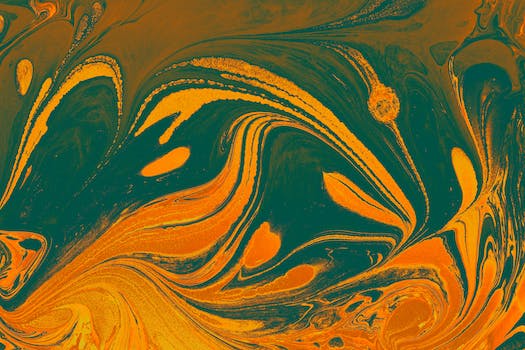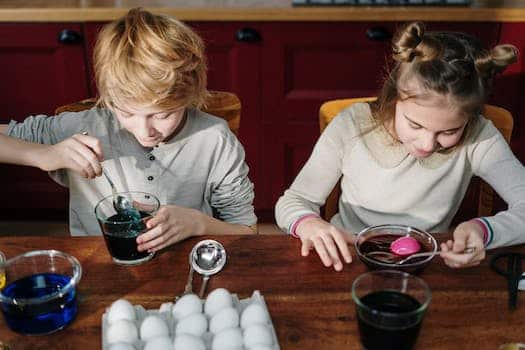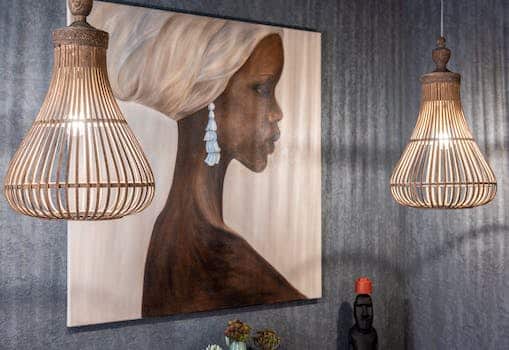Making DIY canvas art is a terrific place to start if you want to add some flair to your home decor. Even if you’re a newbie, there are plenty of simple and enjoyable ideas to attempt. We’ll provide you some ideas and inspiration for your next canvas art endeavor in this article.
- 1. Introduction
- 1.1. Why DIY canvas art?
- 1.2. Benefits of creating your own art
- 1.3. Materials needed for DIY canvas art
- 1.4. Tips for beginners
- 1.5. Inspiration for your DIY canvas art
- 2. Choosing a Design
- 2.1. Finding inspiration for your canvas art
- 2.2. Choosing a color scheme
- 2.3. Deciding on a design
- 2.4. Sketching your design
- 2.5. Transferring your design onto the canvas
- 3. Painting Techniques
- 3.1. Preparing your paint
- 3.2. Choosing the right brush
- 3.3. Basic painting techniques
- 3.4. Blending colors
- 3.5. Adding texture
- 4. Finishing Touches
- 4.1. Adding final details
- 4.2. Sealing your artwork
- 4.3. Framing your canvas
- 4.4. Displaying your artwork
- 4.5. Sharing your artwork
- 5. Conclusion
1. Introduction
Do you want to add a personal touch to your home decor? Do you want to make your own artwork but aren’t sure where to begin? Easy DIY canvas art is the answer! Whether you’re a novice or a seasoned artist, creating your own canvas art may be a rewarding and enjoyable experience. We’ll provide some suggestions and ideas in this article to help you get started on your DIY canvas art journey. We’ll cover all you need to know to make stunning and original canvas art pieces that will impress your guests and bring a bit of individuality to your house, from selecting the correct materials to exploring different techniques.
1.1. Why DIY canvas art?
DIY canvas art is an excellent method to exhibit your creativity while also personalizing your area and saving money. Rather than purchasing pricey artwork, you can design your own one-of-a-kind pieces that reflect your style and personality. DIY canvas art may also be a pleasant and peaceful pastime to do alone or with friends and family. Furthermore, with so many tips and ideas available online, it’s simple to get started and make something lovely.
1.2. Benefits of creating your own art
Making your own art may be a joyful and rewarding experience. Here are some advantages to creating your own art:
1. Self-expression Through art, you may express yourself in a unique and personal way. You can express feelings, thoughts, and concepts that are difficult to express verbally.
2. Stress relief: Art may be a terrific way to relax and unwind. It allows you to focus on the creative process and temporarily forget about your troubles.
3. Better mental health: Studies have shown that creating art can improve mental health. It can help lessen sadness and anxiety symptoms, as well as improve cognitive function.
4. A sense of completion: Finishing an artwork can provide you with a sense of satisfaction and increase your self-esteem. It can also be a terrific method to push yourself and improve your abilities.
Overall, making your own art may be a rewarding and enjoyable activity. There are numerous reasons to try it, whether you are a novice or an established artist.
1.3. Materials needed for DIY canvas art
You will need a few simple things to get started with DIY canvas art. The first thing you’ll need is a canvas. Canvases can be purchased pre-stretched at any art supply store, or they can be made by stretching canvas over wooden stretcher bars. Acrylic paints are a common choice for canvas art, as are brushes, a palette or mixing tray, and a cup of water for rinsing your brushes. Masking tape can be used to create neat edges, stencils or stamps can be used to add patterns or designs, and a spray fixative can be used to protect your finished piece.
1.4. Tips for beginners
Making DIY canvas art is a fun and easy way to personalize your home decor. Even if you are not an expert artist, there are many techniques and concepts that novices can employ to produce beautiful artwork. In this article, we’ll provide you some pointers and ideas for getting started with DIY canvas art.
1.5. Inspiration for your DIY canvas art
The options for DIY canvas art are virtually limitless. Inspiration can come from your favorite artists, nature, or even your own imagination. Take a walk outside and photograph anything that catches your eye, such as bright flowers or unusual textures. Look for renowned paintings on the internet and add your own spin to them. Alternatively, simply let your imagination go wild and see what you come up with. The goal is to have fun while experimenting with various techniques and materials.
2. Choosing a Design
When it comes to making your own canvas art, design is everything. Whether you’re a novice or a seasoned DIYer, selecting a design that you like and that fits your ability level is critical. Abstract patterns, nature landscapes, and inspirational statements or messages are some common design ideas for easy DIY canvas art. When choosing a design, consider your personal taste as well as the decor of the place where you intend to hang your canvas art. Experiment with different colors and textures, and keep in mind that mistakes can frequently lead to creative breakthroughs.
2.1. Finding inspiration for your canvas art
When it comes to producing canvas painting, it might be difficult to find inspiration. However, there are other sources of inspiration available to you. For example, you could draw inspiration from nature or your favorite artists. Your own imagination is another excellent source of inspiration. Spend some time brainstorming and jotting down thoughts that come to mind. Once you’ve gathered a few ideas, you can begin to narrow down your options and select a style that you adore.
2.2. Choosing a color scheme
Choosing the proper color scheme is critical when making DIY canvas art. Colors that compliment each other and create a coherent look are ideal. One method is to use a color wheel to help you select complementary or comparable colors. A monochromatic color scheme, which entails using varying hues and tones of one color, is another possibility. You can also choose colors that match the atmosphere or topic you want to express with your painting. Whatever color scheme you choose, don’t be afraid to experiment with different combinations to see what works best for your project.
2.3. Deciding on a design
When it comes to DIY canvas art, picking a design may be both exciting and overwhelming. The options are limitless, but it’s critical to examine a few essential considerations before making a decision. First, consider the location where the work will be placed. What colors and themes will work well in the space? Consider your particular style and interests next. Do you like abstract or realistic depictions? Finally, consider the level of complexity that you are comfortable with. As a beginner, it is preferable to begin with simple designs and progress from there. By taking these variables into account, you will be able to select a design that not only looks fantastic but also shows your particular taste and ability level.
2.4. Sketching your design
Before you start your DIY canvas painting project, you should have a good idea of what you want to make. Spend some time sketching out your design on paper, experimenting with different shapes, colors, and patterns until you find a good mix. Don’t worry if your drawing abilities aren’t flawless; the purpose is merely to get your thoughts down on paper so you can see how they’ll look on your canvas. Once you’ve completed a preliminary drawing, you can begin to consider the resources you’ll require and how you’ll bring your idea to life.
2.5. Transferring your design onto the canvas
Once you’ve decided on a design for your DIY canvas art, you’ll need to transfer it to the canvas. Depending on the complexity of your design, there are a few options. One simple way is to softly sketch the pattern onto the canvas with a pencil. Transfer paper can also be used to transfer a printed design onto the canvas. Another method is to construct a more exact outline with stencils or tracing paper. To avoid damage, whichever method you use, take your time and be delicate with the canvas.
3. Painting Techniques
When it comes to basic DIY canvas art, there are numerous painting techniques that novices can try. Acrylic paint, which is easy to work with and dries rapidly, is a popular technique. Another method is to make geometric shapes or patterns on the canvas with stencils or tape. Those who prefer a more abstract approach might achieve beautiful effects by just experimenting with different brush strokes and color combinations. Adding texture to the painting with materials like sand or tissue paper can also give depth and intrigue to the final image.
3.1. Preparing your paint
It is critical to properly prepare your paint before beginning your DIY canvas art project. Begin by selecting the colors you wish to utilize and ensuring that they are of high quality. Next, using a palette knife, mix your paint on a palette or a paper plate. This ensures that the colors merge smoothly and that the consistency is smooth. If your paint is excessively thick, dilute it with a little water. Finally, use newspaper or a drop cloth to protect your work surface from any unintentional spills or drips.
3.2. Choosing the right brush
Choosing the appropriate brush is critical when producing your own canvas art. There are various brush kinds and sizes available, each with its own distinct characteristics. A basic set of circular brushes in various sizes is a nice place to start for novices. These brushes are versatile and may be used for detailed work as well as wide areas. Flat brushes are useful for making smooth, uniform strokes, and fan brushes are useful for blending and creating texture. It’s also vital to think about what kind of paint you’ll be using, because some brushes are better suited to particular colours than others. Experiment with various brush types and sizes to find out what works best for you and your artistic style.
3.3. Basic painting techniques
Before you begin your DIY canvas art project, you need be familiar with basic painting techniques. These approaches will assist you in producing stunning, professional-looking artwork. Here are a few pointers to get you started:
1. Brush Strokes: Vary your brush strokes to add texture and depth to your painting. Experiment with various brush types and stroke styles to generate different results.
2. Color blending: Color blending is an important skill in painting. Blend colors together with a dry brush or a damp sponge for a smooth transition.
3. Layering: Another technique for adding depth and character to your painting is layering. Begin with a base layer and work your way up, allowing each layer to dry before applying the next.
4. Dry Brushing: This method involves using a dry brush with very little paint to achieve a rough, grainy finish. This technique is excellent for achieving an aged or distressed appearance.
You’ll be able to produce gorgeous canvas art that seems like it was done by an expert using these simple techniques.
3.4. Blending colors
Color blending is a crucial method for creating attractive canvas art. Begin by choosing hues from the same color family, such as blue and green or red and orange, to make a smooth mix. Apply the lighter color first, then gradually add the darker color, mixing as you go. To blend the colors together, use a brush, sponge, or even your fingertips. Experiment with various blending techniques to produce unique and fascinating results. Remember to practice and enjoy yourself!
3.5. Adding texture
Texturing your canvas art is a terrific method to make it more aesthetically appealing. You may do this with a variety of materials, including sand, glue, and even tissue paper. Mix sand with paint and apply it to the canvas with a palette knife to produce a textured appearance. Mix glue with a small amount of water and apply it to the canvas before painting for a more delicate effect. Tissue paper can also be used by crumpling it up and pasting it to the canvas before painting. This will result in a distinct texture that will add depth and complexity to your artwork.
4. Finishing Touches
After you’ve finished your basic design on the canvas, it’s time to add some finishing touches to take your DIY canvas art to the next level. Here are some suggestions:
1. Texture: Use different materials to add texture to your canvas, such as tissue paper, burlap, or even sand. Using a glue gun, adhere them to your canvas and allow them to cure completely.
2. Make Use of Stencils: Stencils are an excellent technique to add detailed designs to your canvas art. You can either buy pre-made stencils or make your own with a cutting machine or a craft knife.
3. Experiment with Colors: Experiment with different color combinations to create a one-of-a-kind aesthetic. Spray paint, acrylic paint, and even watercolors can be used.
4. Add Some Shine: To add some sparkle to your canvas art, use metallic paints or glitter. Metallic markers can also be used to create elaborate designs.
These are only a few suggestions to get you started. When it comes to DIY canvas art, the possibilities are unlimited, so don’t be afraid to experiment and have fun!
4.1. Adding final details
When you’ve finished your canvas painting, it’s time to add the final touches to make it stand out. Here are some suggestions and ideas:
1. Add texture: To add texture to your painting, use a palette knife or a sponge. This can aid in the creation of depth and intrigue.
2. Frame it: Consider framing your canvas for a more polished look. This can give it a more professional appearance while also protecting your artwork.
3. Experiment with color: Use bold or surprising hues to bring pops of color to your painting. This can give a lively and fun element to your artwork.
4. Use metallic paints or pens to add a touch of glitz to your painting. Use them to draw attention to specific places or to add features.
5. Personalize your canvas: Finally, consider personalizing your canvas. This might be a quote, a symbol, or anything else meaningful to you. It will enhance and distinguish your painting.
4.2. Sealing your artwork
Once you’ve completed your DIY canvas painting, seal it to preserve it from dust, dirt, and other environmental elements. There are several methods for sealing your artwork, but the most usual is to use a clear acrylic sealer. This will form a barrier between the paint and the outside world, allowing the colors and texture of your piece to be preserved. Simply spray a light coat of sealer over the entire surface of the canvas, being careful not to oversaturate any one region. Allow your artwork to dry completely before touching or displaying it. Another approach is to apply a coating of clear wax on your canvas. This will give a comparable protective barrier but with a more matte look. Whatever method you select, make sure to properly follow the manufacturer’s directions and work in a well-ventilated environment.
4.3. Framing your canvas
After you’ve finished your canvas art, consider framing it for a more finished effect. Here are some recommendations for framing your canvas:
1. Measure the canvas: Before buying a frame, take the time to measure the canvas. Make the frame slightly larger than the canvas to allow for attachment.
2. Select a frame: Choose a frame that suits your painting and complements your décor. You can select from a range of materials, including wood, metal, and plastic.
3. Prepare the canvas: Remove any staples or nails from the canvas’s backside. The canvas should then be attached to the frame with a staple gun or adhesive.
4. Add hanging hardware: For convenient hanging, attach a wire or hook to the back of the frame. Ascertain that it is properly fastened and capable of supporting the weight of your artwork.
4.4. Displaying your artwork
When you’ve finished your DIY canvas art, consider how you want to display it. Depending on the size and design of your artwork, you have numerous possibilities. Consider constructing a gallery wall with other artwork or images for smaller pieces. You could also use the canvas as a table centerpiece or prop it up on a shelf or mantel. Consider hanging larger pieces as a statement piece on a blank wall. To ensure security, thoroughly measure the room and utilize appropriate hardware. Another alternative is to place the canvas against a wall or even on a piece of furniture like a bookcase or dresser. Make sure that any solution you choose compliments the style and look of your home.
5. Conclusion
Making your own canvas art is a gratifying and enjoyable experience, especially for novices. You can simply produce stunning and personalized pieces that will add a unique touch to your home decor by following the advice and ideas discussed in this article. Remember to play around with different materials, colors, and techniques until you discover the ideal match for your style and personality. Anyone can become a DIY canvas art master with a little ingenuity and perseverance!
5.1. The satisfaction of creating your own art
Making your own work provides a particular sense of fulfillment. It gives you the ability to express yourself in ways that words cannot. When you make art, you can use your creativity to bring your ideas to life. You can play around with colors, textures, and forms to create something completely unique. Whether you are an experienced artist or a novice, the act of making art is always rewarding. It enables you to connect with your inner self and express your emotions in a therapeutic and uplifting manner. So, if you’re seeking for a new activity or a creative outlet, try making your own art. It may surprise you how satisfying it may be.
5.2. Benefits of continued art practice
Individuals of all ages can benefit from continuing to practice art. For starters, it is an excellent way to reduce stress and promote mental health. Art enables for self-expression and can be utilized therapeutically. Additionally, frequent art practice might help children develop hand-eye coordination and fine motor skills. It can also boost creativity and problem-solving skills. Art may be a social activity that helps people build their confidence and communication abilities. Overall, continued art practice can benefit both mental and physical well-being.
5.3. Encouragement to keep creating
Making art can be intimidating, especially for beginners. However, keep in mind that art is subjective, and there are no right or wrong ways to produce it. The beauty of art is found in its flaws and originality. Don’t quit up if you’re a beginner and feel disheartened by your perceived lack of aptitude or competence! Continue to practice and experiment with new techniques and styles. Remember that every great artist began as a beginner. You will improve and create stunning pieces of art that show your unique perspective and originality with time and determination.
5.4. Resources for further learning
If you wish to advance your canvas art talents, there are numerous tools available both online and offline. Consider the following options:
1. Online courses: Websites such as Skillshare and Udemy provide a choice of painting and art techniques courses. You may find courses on canvas art as well as general painting classes to help you enhance your skills.
2. Art books: There are numerous books on painting and art accessible. Look for books on canvas art or painting techniques that are of interest to you.
3. Art lessons: Many community centers and art schools offer painting classes. Look for canvas art or painting skills lessons that interest you.
Whatever materials you use, remember that practice is essential. The more you paint, the better you’ll get.
5.5. Final thoughts
Making your own canvas art is a gratifying and exciting experience that can add a distinctive touch to your home decor. Even beginners may produce stunning and professional-looking items using the techniques and ideas in this article. Remember to try out various approaches and materials to see what works best for you. Make mistakes and learn from them without fear. Most importantly, enjoy the process of making your own personalized canvas art!
Conclusion
Finally, making your own canvas art does not have to be complicated or costly. Even beginners may create stunning and distinctive artworks that exhibit their ingenuity with a few simple suggestions and ideas. So why not give it a shot and see what you can come up with? Have fun drawing!






These 10 innovative and imaginative DIY home decor ideas from [object Object] provide a refreshing approach to enhancing ones living…